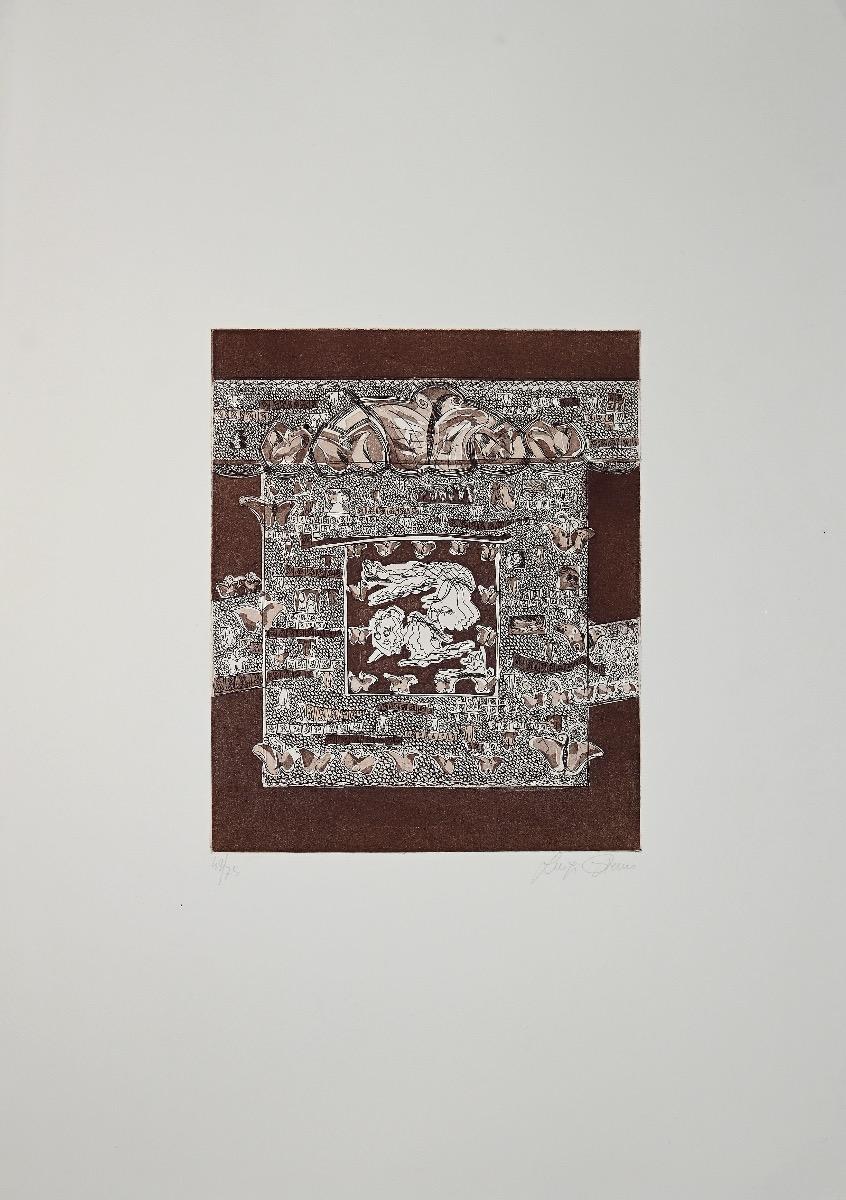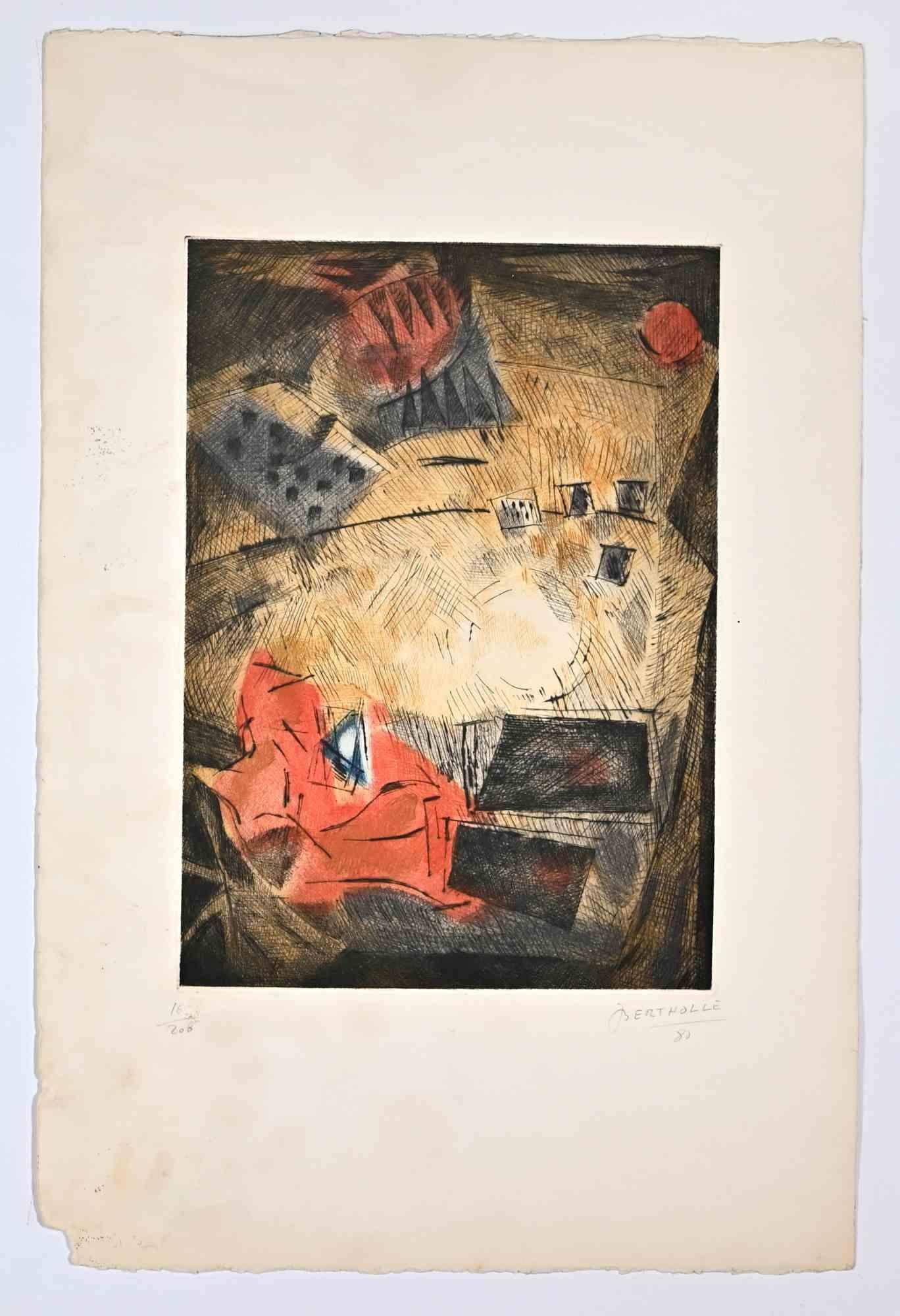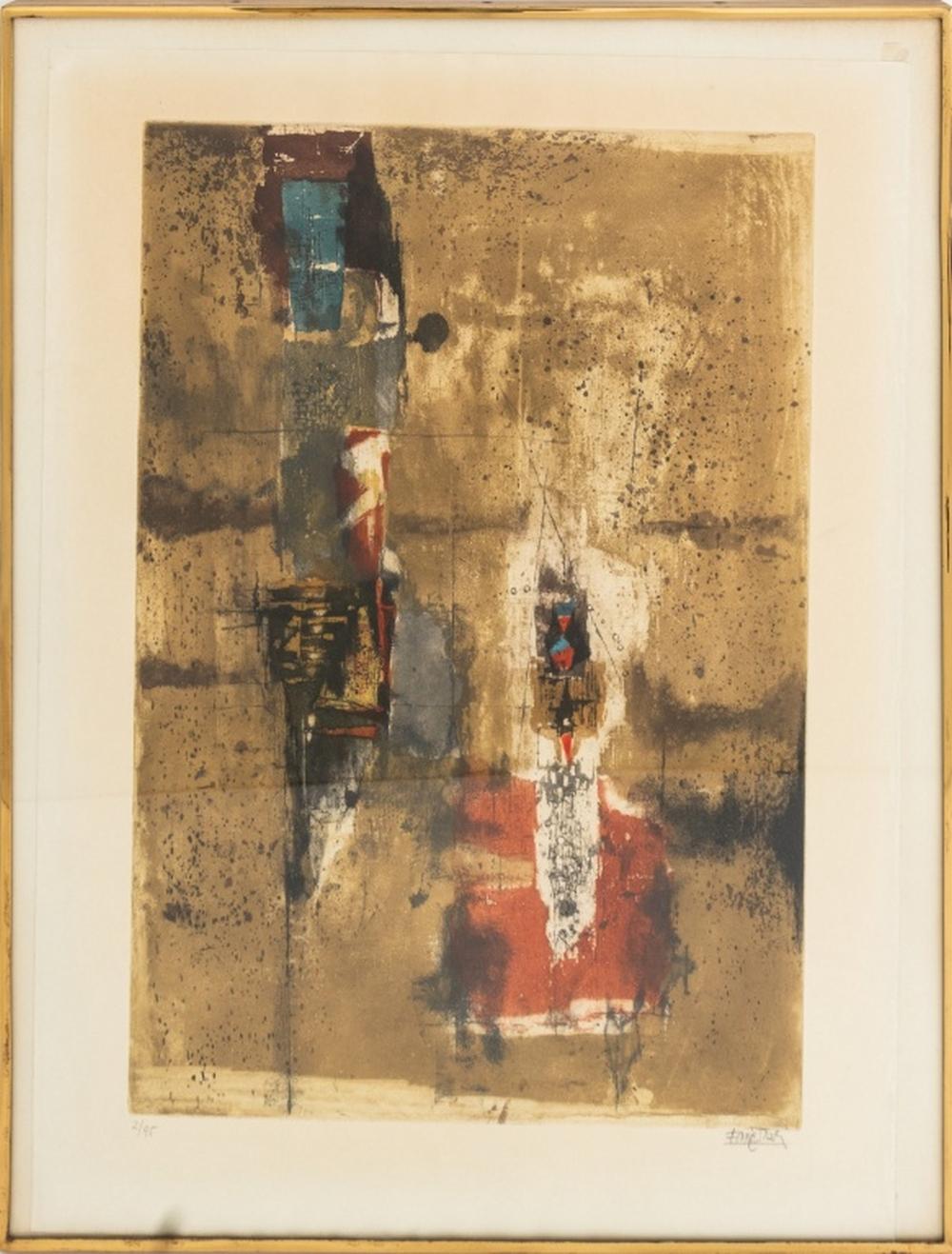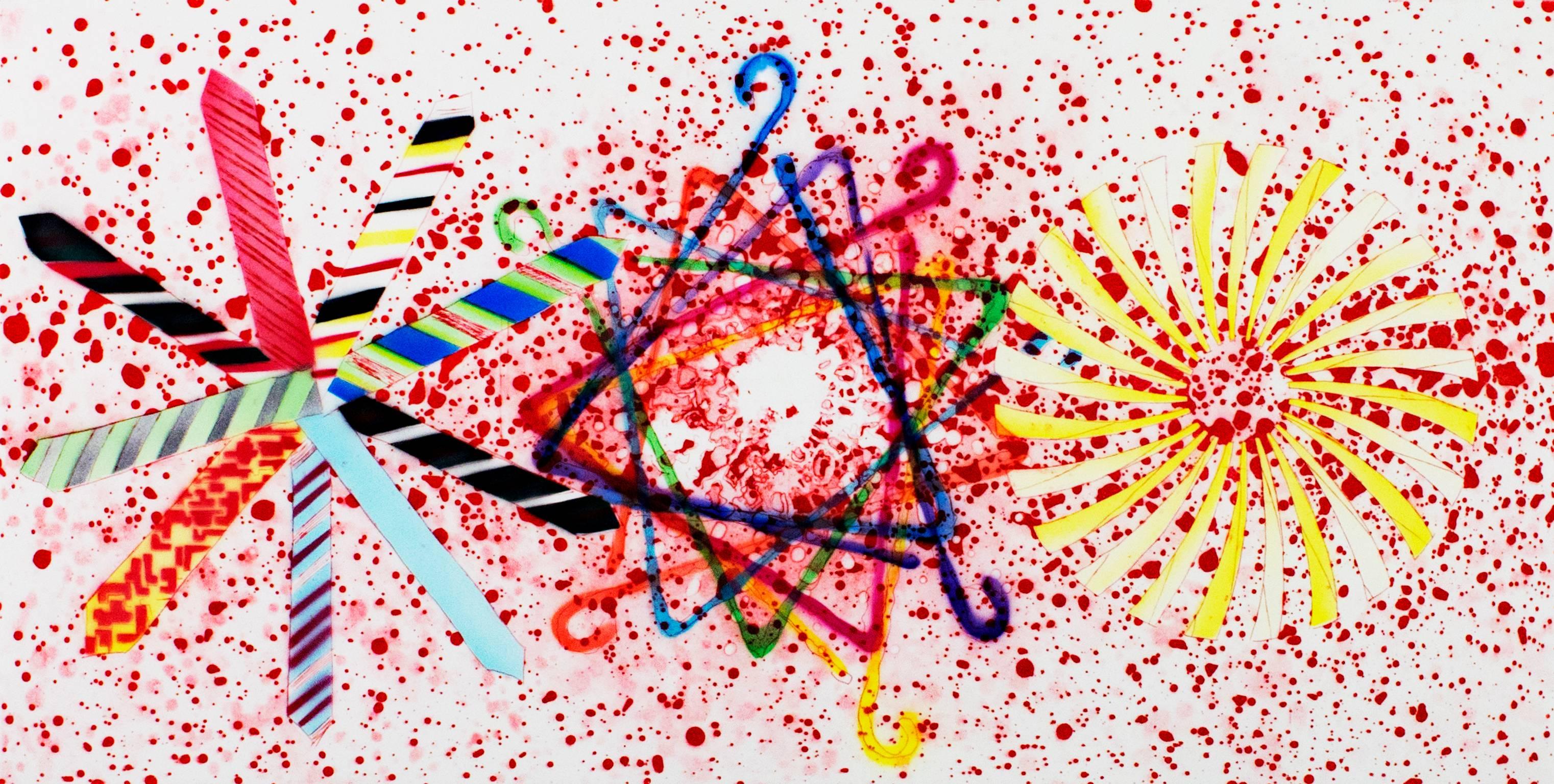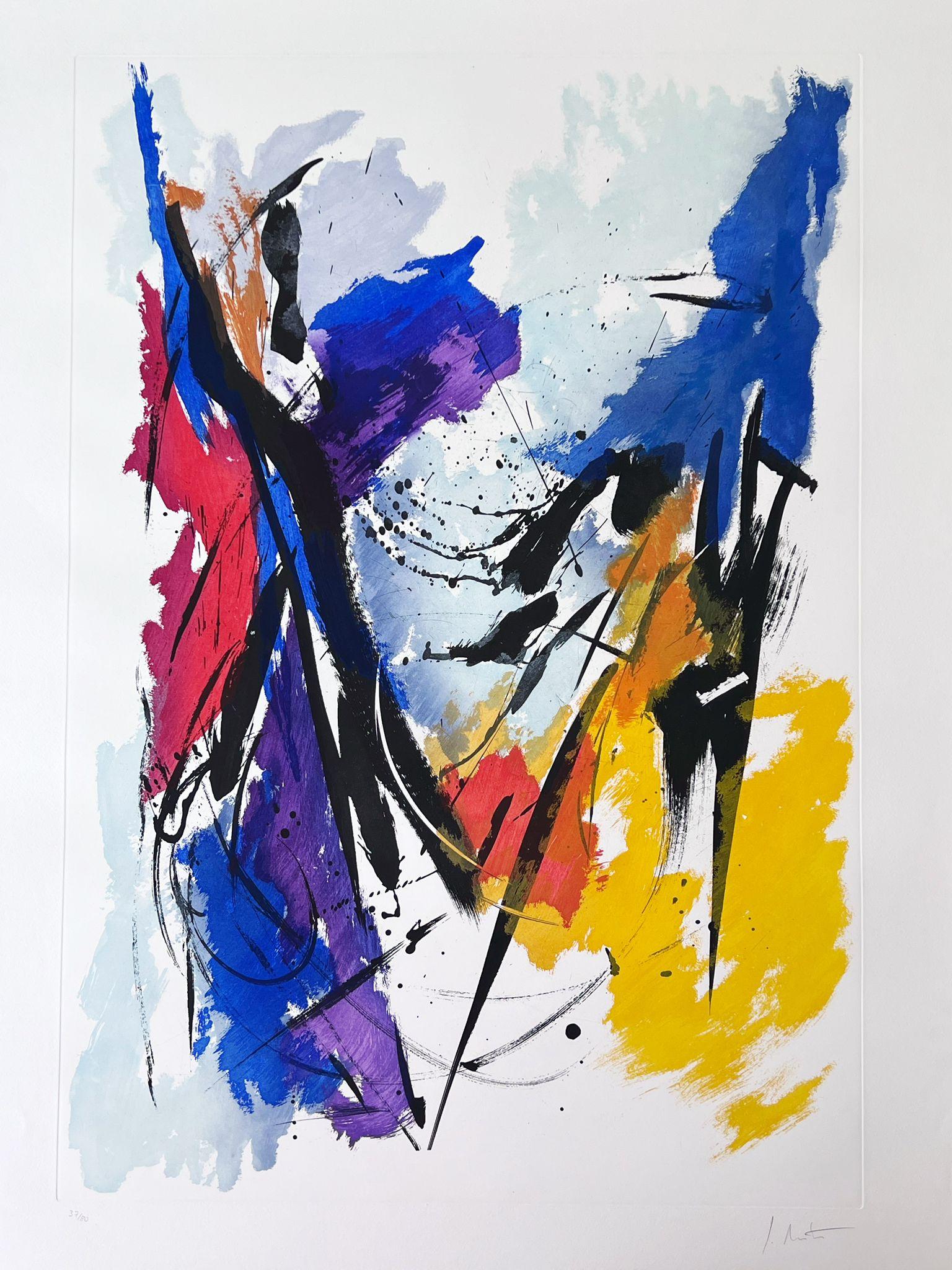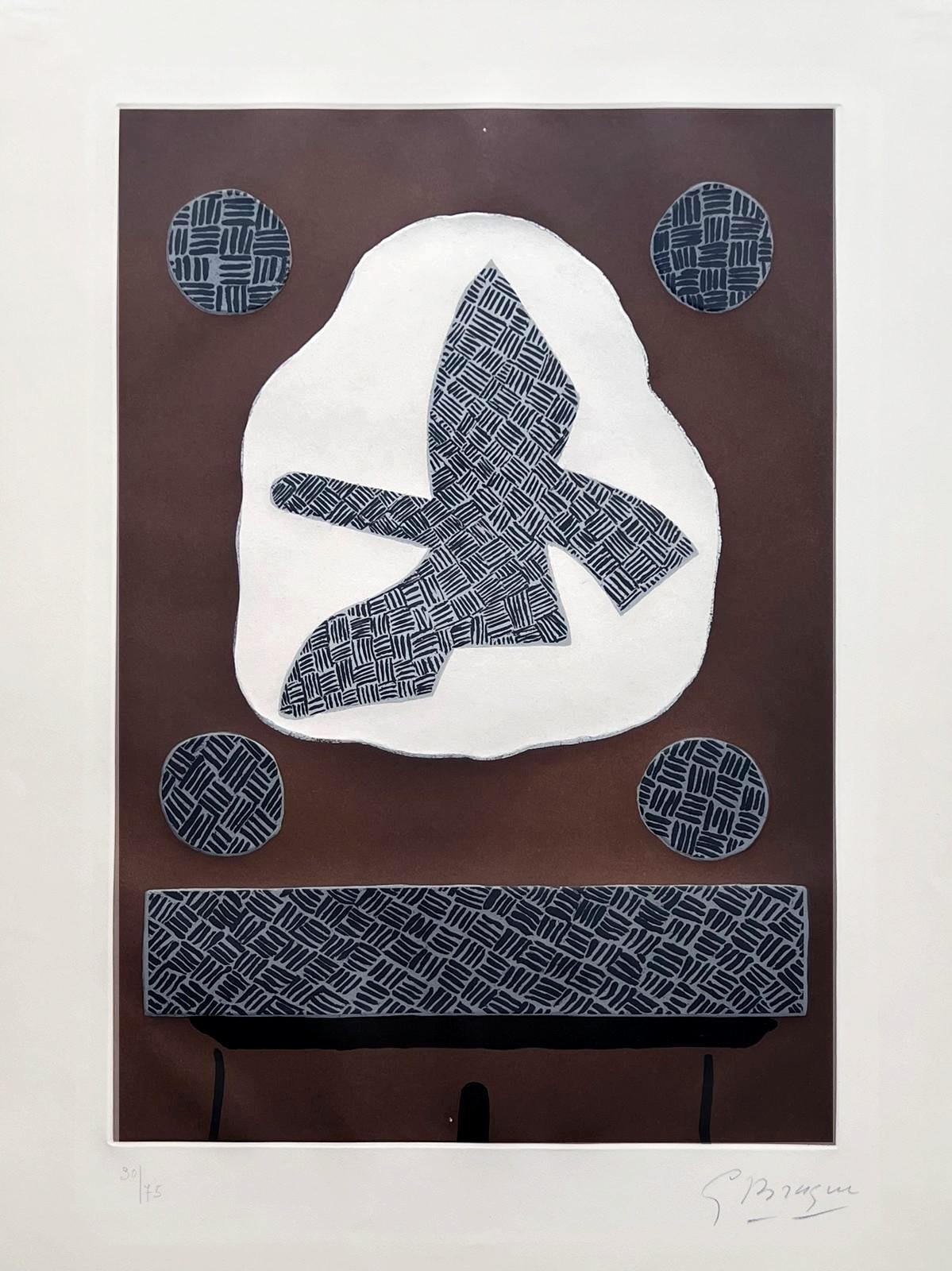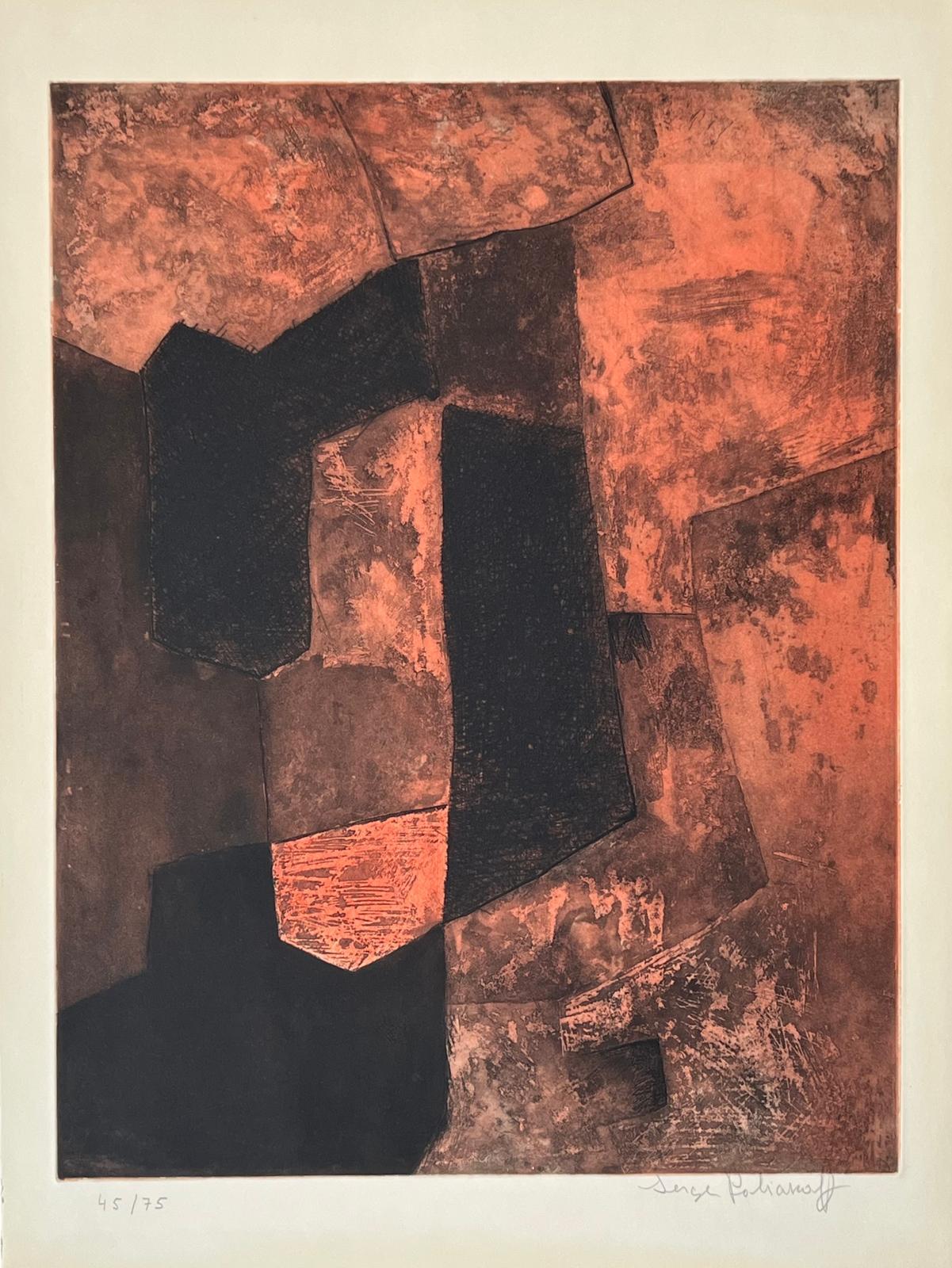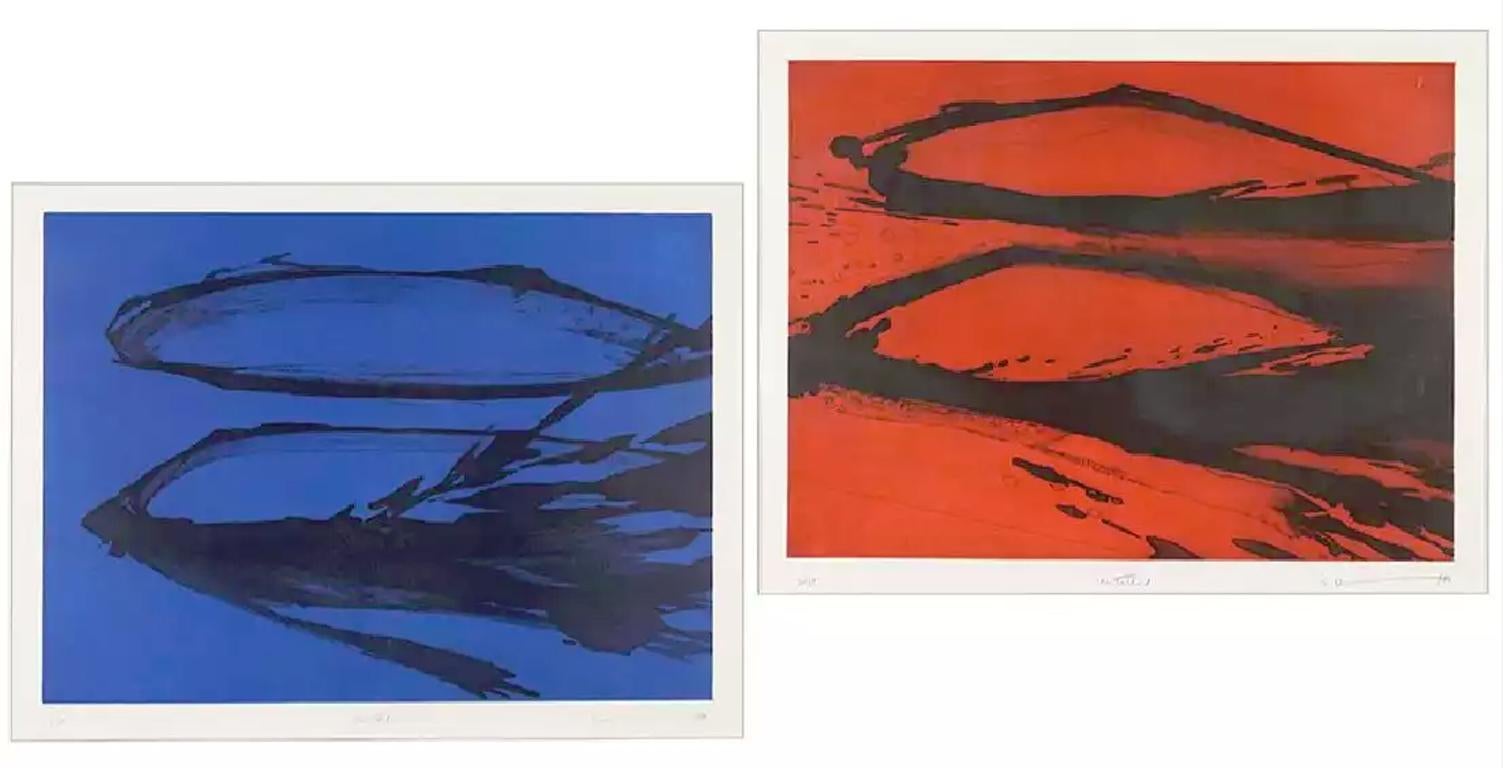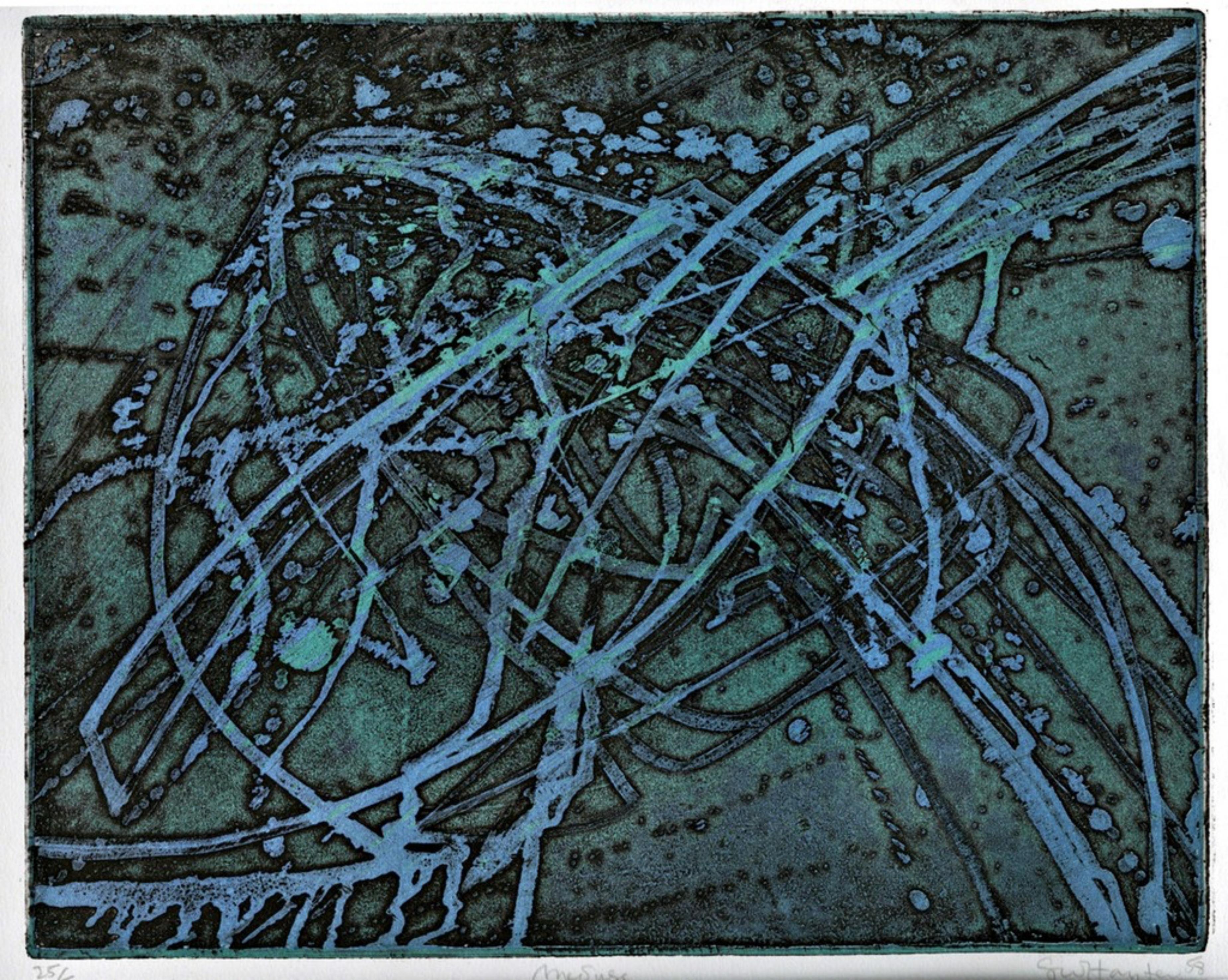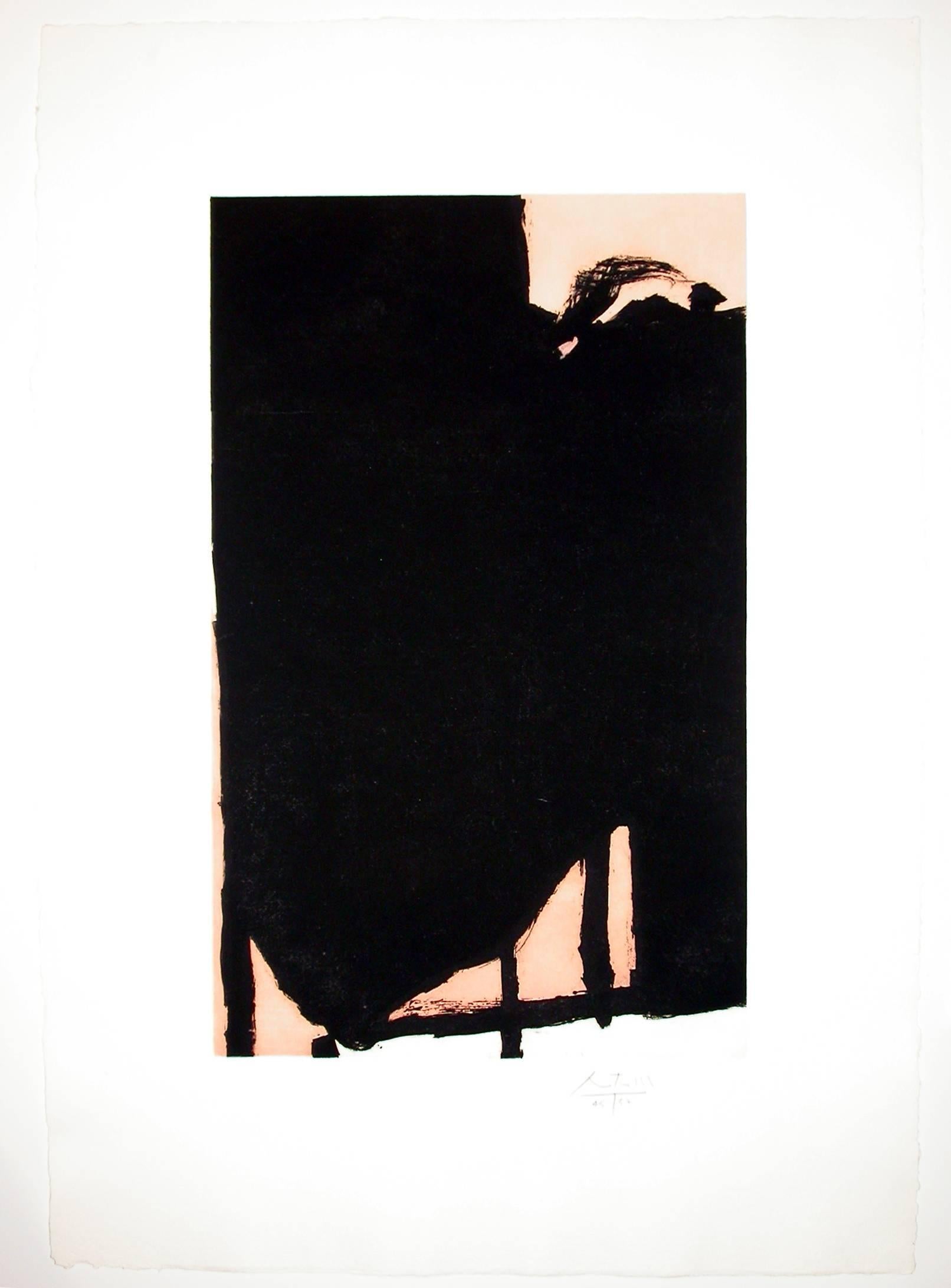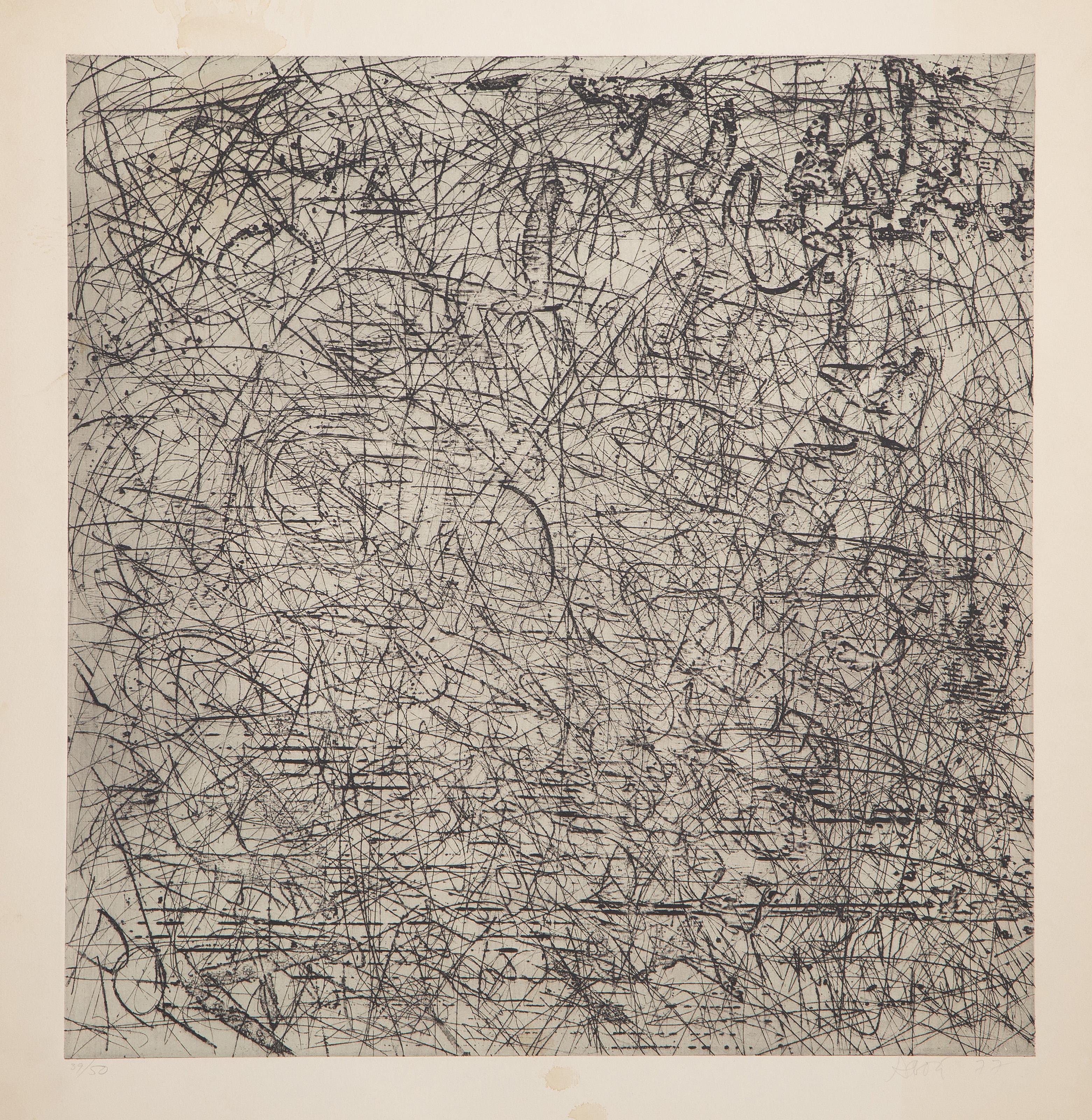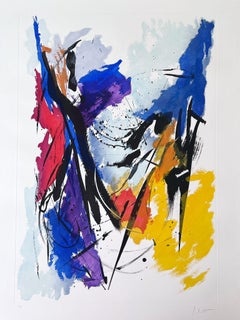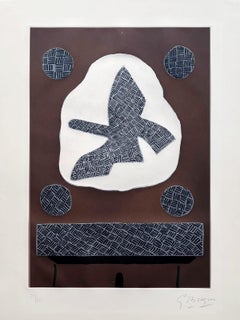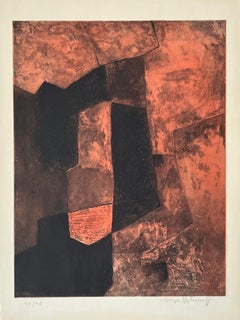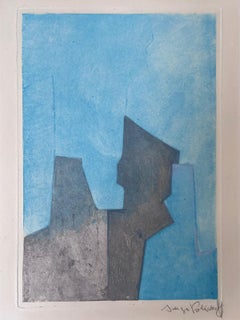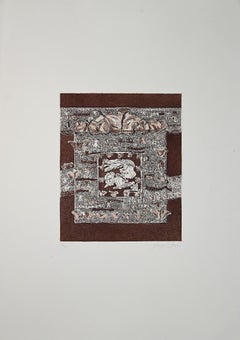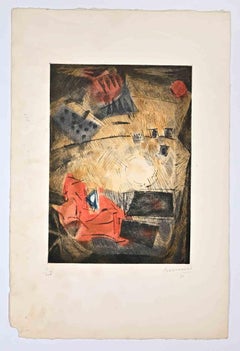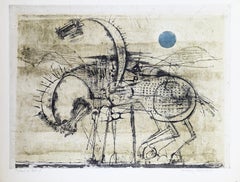
Horse
View Similar Items
Want more images or videos?
Request additional images or videos from the seller
1 of 5
Johnny FriedlaenderHorse2000
2000
Price:$567.32
$711.67List Price
About the Item
- Creator:Johnny Friedlaender (1912 - 1992, Polish)
- Creation Year:2000
- Dimensions:Height: 18.9 in (48 cm)Width: 25.2 in (64 cm)
- Medium:
- Movement & Style:
- Period:
- Condition:Very good condition.
- Gallery Location:Paris, FR
- Reference Number:Seller: LCD66391stDibs: LU1066214779272
Johnny Friedlaender
Johnny Gotthard Friedlaender was born in Pless (Silesia) and his early studies were in Breslau under Otto Mueller. In 1936 Friedlaender journeyed to Czechoslovakia, Switzerland, Austria, France and Belgium. At the Hague he held a successful exhibition of etchings and watercolours. He fled to Paris in 1937 as a political refugee of the Nazi regime with his young wife, who was an actress. In that year he held an exhibition of his etchings which included the works: L 'Equipe and Matieres et Formes. From 1939 to 1943 he was interned in a series of concentration camps, but survived. After freedom in 1944 Friedlaender began a series of twelve etchings entitled Images du Malheur with Sagile as his publisher. In the same year he received a commission to illustrate four books by Freres Tharaud of the French Academy. In 1945 he performed work for several newspapers including Cavalcade and Carrefour. In 1947, he produced the work Reves Cosmiques, and in that same year he became a member of the Salon de Mai, which position he held until 1969. In the year 1948 he began a friendship with the painter Nicolas de Stael and held his first exhibition in Copenhagen at Galerie Birch. The following year he showed for the first time in Galerie La Hune in Paris. After living in Paris for 13 years, Friedlaender became a French citizen in 1950. Friedlaender expanded his geographic scope in 1951, and exhibited in Tokyo in a modern art show. In the same year he was a participant in the XI Trienale in Milan, Italy. By 1953 he had produced works for a one-man show at the Museum of Neuchâtel and exhibited at the Galerie Moers in Amsterdam, the II Camino Gallery in Rome, in São Paulo, Brazil and in Paris. He was a participant of the French Italian Art Conference in Turin, Italy that same year. Friedlaender accepted an international art award in 1957, becoming the recipient of the Biennial Kakamura Prize in Tokyo. In 1959 he received a teaching post awarded by UNESCO at the Museum of Modern Art in Rio de Janeiro. By 1968, Friedlaender was travelling to Puerto Rico, New York and Washington, D.C. to hold exhibitions. That year he also purchased a home in the Burgundy region of France. 1971 was another year of diverse international travel including shows in Bern, Milan, Paris, Krefeld and again New York. In the latter city he exhibited paintings at the Far Gallery, a venue becoming well known for its patronage of important twentieth century artists. 1978 brought a retrospective of Friedlaender's works at the Musee d'Art Moderne de la Ville de Paris. He was awarded the Lovis Corinth Prize in Regensburg three years later. On his 75th birthday, Friedlaender was given a retrospective in the Bremen Art Museum. On his 80th birthday he held a retrospective exhibition in Bonn at the municipal council offices. Friedlaender died in Paris at the age of 89.
About the Seller
4.8
Vetted Professional Seller
Every seller passes strict standards for authenticity and reliability
Established in 2007
1stDibs seller since 2018
175 sales on 1stDibs
Typical response time: 12 hours
Authenticity Guarantee
In the unlikely event there’s an issue with an item’s authenticity, contact us within 1 year for a full refund. DetailsMoney-Back Guarantee
If your item is not as described, is damaged in transit, or does not arrive, contact us within 7 days for a full refund. Details24-Hour Cancellation
You have a 24-hour grace period in which to reconsider your purchase, with no questions asked.Vetted Professional Sellers
Our world-class sellers must adhere to strict standards for service and quality, maintaining the integrity of our listings.Price-Match Guarantee
If you find that a seller listed the same item for a lower price elsewhere, we’ll match it.Trusted Global Delivery
Our best-in-class carrier network provides specialized shipping options worldwide, including custom delivery.More From This Seller
View AllUntitled
By Jean Miotte
Located in Paris, FR
Aquatint, 1991
Handsigned by the artist in pencil and numbered 37/80
125.00 cm. x 88.00 cm. 49.21 in. x 34.65 in. (paper)
98.00 cm. x 66.00 cm. 38.58 in. x 25.98 in. (image)
In thi...
Category
1990s Abstract Abstract Prints
Materials
Aquatint
L'oiseau de passage
By Georges Braque
Located in Paris, FR
Etching and aquatint, 1961
Handsigned by the artist in pencil and numbered 30/75
Publisher : Maeght (Paris)
Printer : Maeght (Paris)
Catalog : [Vallier 166, p.235]
75.00 cm. x 56.50 ...
Category
1960s Abstract Abstract Prints
Materials
Etching, Aquatint
Composition Brune et Rouge XV
By Serge Poliakoff
Located in Paris, FR
Etching and aquatint, 1964
Handsigned by the artist in pencil
Edition : 45/75
Publisher : XXe siècle (Paris)
Printer : S. Esmeraldo (Paris)
Catalog : [Schneider XV]
75.00 cm. x 56.5...
Category
1960s Abstract Abstract Prints
Materials
Etching, Aquatint
Price Upon Request
Blue composition XXIV
By Serge Poliakoff
Located in Paris, FR
Etching and aquatint, 1964
Handsigned by the artist in pencil
Edition : 110 ex.
Publisher : La Rose des Vents (Paris)
Printer : Jean Signovert (Paris)
Catalog : Schneider XXIV
38...
Category
1960s Abstract Abstract Prints
Materials
Etching, Aquatint
Oiseaux en péril
By Max Ernst
Located in Paris, FR
Etching and aquatint, 1975
Handsigned by the artist in pencil and annotated XXVII/XXX
Publisher : Georges Visat (Paris)
54.00 cm. x 42.00 cm. 21.26 in. x 16.54 in. (paper)
30.50 cm....
Category
1970s Abstract Abstract Prints
Materials
Etching, Aquatint
Composition in black, yellow and red X
By Serge Poliakoff
Located in Paris, FR
Etching and aquatint, 1962
Handsigned by the artist in pencil and numbered 74/75
Printer : Jean Signovert, Paris
Catalog : Schneider X
56.50 cm. x 76.00...
Category
1960s Abstract Abstract Prints
Materials
Etching, Aquatint
Price Upon Request
You May Also Like
Abstract Composition - Original Etching and Aquatint - 1960s
Located in Roma, IT
Image dimensions: 7 x 10 cm.
Abstract Blue Composition is a color etching, drypoint and burin on paper by an artist who signs "Benic".
Signed and numbered in Arabic numerals and i...
Category
1960s Abstract Abstract Prints
Materials
Etching, Aquatint
Butterfly Pool - Original Aquatint and Etching by Luigi Gheno - 1970s
By Luigi Gheno
Located in Roma, IT
Butterfly Pool is an original print realized in the 1970s by Luigi Gheno.
Original aquatint and etching.
Hand-signed on the lower right in pencil, and nu...
Category
1970s Abstract Abstract Prints
Materials
Etching, Aquatint
Abstract Composition - Etching by Jean Bertholle - 1952
By Jean Bertholle
Located in Roma, IT
Abstract Composition is an etching print realized in 1980 by Jean Bertholle (1909-1996).
Hand-signed on the lower and date.
Numbered. Edition, 16/200.
Good Conditions.
The artwor...
Category
1950s Abstract Abstract Prints
Materials
Etching, Aquatint
Johnny Friedlaender Abstract Composition Aquatint
By Johnny Friedlaender
Located in Astoria, NY
Johnny Gotthard Friedlaender (German, 1912-1992), Abstract Composition, Etching and Aquatint in color on "L'Oeuvre Gravee" paper, blind stamped lower left, signed in pencil lower rig...
Category
20th Century Abstract Abstract Prints
Materials
Paper, Etching, Aquatint, Intaglio
"More Points on a Bachelor's Tie, " Etching & Aquatint signed
By James Rosenquist
Located in Milwaukee, WI
This is an abstract etching and aquatint by American artist James Rosenquist with colorful red, blue, green, and yellow shapes. It is signed and dated in pencil. Edition 57/78
17 3/...
Category
1970s Abstract Abstract Prints
Materials
Etching, Aquatint
A Pair of Abstract Aquatint Etchings by Sydney Drum 1980
Located in Long Island City, NY
Artist: Sydney Drum, Canadian (1962 - )
Title: Set of Two Etchings
Year: 1980
Medium: Etching with Aquatint, signed and numbered in pencil
Edition: 18/25...
Category
1980s Abstract Abstract Prints
Materials
Etching, Aquatint
$1,200 Sale Price
20% Off
